REU Research Projects
Projects include experimental, computational, and theoretical work in a variety of areas within or related to materials physics. Completion of a first-year physics or chemistry course sequence is a prerequisite for all projects. Additional prerequisites are noted in the project descriptions.
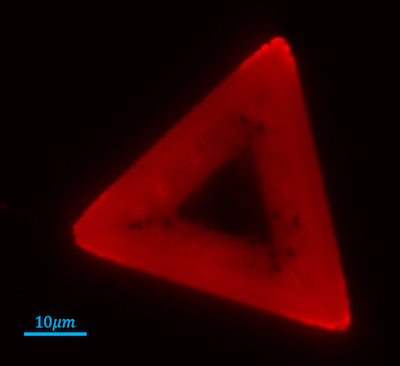
Nanoscale devices (Prof. Paola Barbara) Prof. Barbara’s research group studies the transport properties of devices made with atomically thin materials. Current research projects mainly involve molybdenum disulfide, graphene, and other two-dimensional materials, which are of interest both for their basic properties (such as superconductivity) and for applications (such as chemical sensors, detectors of THz radiation, photovoltaic cells and sources of electromagnetic radiation). Students learn how to grow these materials via chemical vapor deposition and characterize their optical properties via Raman spectroscopy. They will also fabricate devices and learn how to test their electrical transport properties. Specific projects will be defined later in the spring and designed to complement ongoing research.

Structure of soft matter (Prof. Daniel Blair) The Blair group investigates the structure and function of soft and biological matter using a variety of tools and approaches. Systems of interest include colloidal glasses and gels, unsteady microfluidic flows in non-Newtonian fluids, non-linear rheology of biological polymers, and diffusion in model networks. The primary tools for this work are three-dimensional laser scanning confocal microscopy, advanced image processing, bulk rheology, opto- and micro- rheology, and laser light scattering. Students in the lab use high-resolution microscopy techniques to acquire time-resolved three-dimensional image data which is then processed using advanced image processing software developed for MATLAB and IDL. A summer REU student will contribute to ongoing efforts to measure the microscopic profile of deformed bio-polymer matrices. The goal is to understand the microscopic origins of the non-linear rheology of these materials. By directly imaging a fluorescently labeled network of polymers during a macroscopically applied shear strain, the student will measure how the network deforms locally. This will reveal the length scale that the local shear becomes non-affine, a critical feature of current theories developed to understand biological polymers.

Soft matter in construction: models and simulations of soft solids (Prof. Emanuela Del Gado) The Del Gado group uses statistical mechanics and computational physics to investigate the structure, dynamics, and emerging mechanics in soft solids. The materials of interest range from colloidal gels to jammed dense suspensions and tissues, to self-assembled nanocomposite interfaces, to the sticky gels formed during cement hydration and responsible for cement strength. The focus is on unraveling how nano-scale structure and effective interactions may interplay with deformation or other non-equilibrium conditions to change the material properties. The aim is to devise new paradigms for material design, to obtain specific unusual rheological behavior or more sustainable formulations of smart compounds. Motivated by the need to reduce greenhouse gas emissions associated with cement production, the work on cement gels aims at a first-principles understanding of cement properties, a prerequisite to controlling the processing and formulating alternatives. The student will perform computer simulations of model gels or other soft solids, and use novel analytical tools to investigate their microscopic spatial and temporal complexity. Project ideas this year will include materials for construction in space, double network gels, and fracture of soft solids. Preference will be given to students with computational skills.
Physics education research (Leanne Doughty): The Doughty group seeks to understand and improve student experiences in undergraduate physics courses. Student success and persistence in a major is closely tied to their sense of belonging and self-efficacy within the discipline. As such, one area of interest is the development of students’ physics identity earlier in the major. Course-based Undergraduate Research Experiences (CUREs) affords students opportunities to engage in authentic research during their lower-division courses. CUREs provide students access to real data and practice with analytic tools, such as computational modeling and statistical analysis. An REU student could develop a materials physics CURE for our sophomore-level Modern Experimental Physics course. The student would collaborate with other REU students and members of other research groups in the department to identify an appropriate research question and collect the required data. The student would also develop instruction to scaffold student engagement with the relevant physics concepts and the computation involved in the analysis.
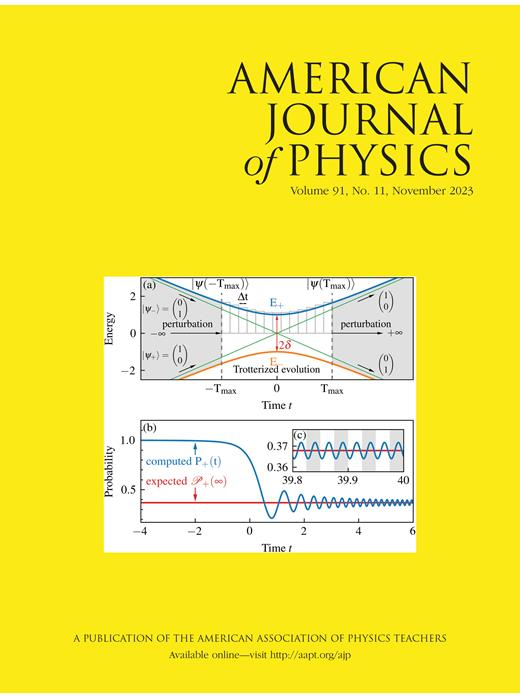
Research in quantum mechanics and quantum computing (Prof. Jim Freericks) Prof. Freericks has summer research projects in the areas of quantum pedagogy development and in quantum computing. The goal of this work is to perform sufficient research during the summer to complete an article for a peer-reviewed journal publication. I also want students to be able to understand all of the research they are involved in, not just a small piece to the larger problem. The areas I have worked on recently with REU students involve numerical projects on the Landau-Zener problem and on supersymmetric quantum mechanics for supersymmetric violating potentials, and algebraic projects on an operator generalization of Rodrigues formulas, and on single-shot factorization methods that solve Natanzon’s problem. In quantum computing, I have worked on using quantum computers to model single quantum experiments, such as the Stern-Gerlach experiment and Mach-Zehnder interferometer, and the Hubbard model. For this upcoming summer, I have a range of projects to choose from. One is on examining the density matrix of the driven damped quantum oscillator. A second is on quantum computing, with a focus on simulating experiments, such as the Hong-Ou-Mandel experiment. A third is on examining the theory behind the Franson interferometer, which entangles quanta in time rather than space.
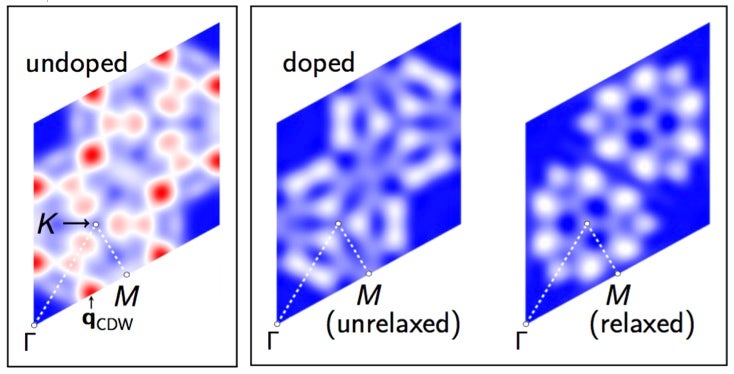
Computational studies of 2D materials (Prof. Amy Liu) This research group uses computational methods to understand and predict structural, electronic, and vibrational properties of materials, including superconductors, clusters, and nanostructures. One area of interest is in the properties of layered materials that can be exfoliated into atomically thin samples, similar to graphene. The electronic and optical properties of molybdenum disulfide, for example, have been shown to change dramatically as the number of layers is reduced. In the 2D limit, these materials tend to be very sensitive to the environment and the choice of substrate. An REU student might perform simulations to determine how structural and electronic properties of the 2D material varies with the substrate or the type of defects present. The goal is to understand the physics behind these effects and understand how to optimize these materials for nanoscale devices. Preference will be given to students who have completed a sophomore-level modern physics course.
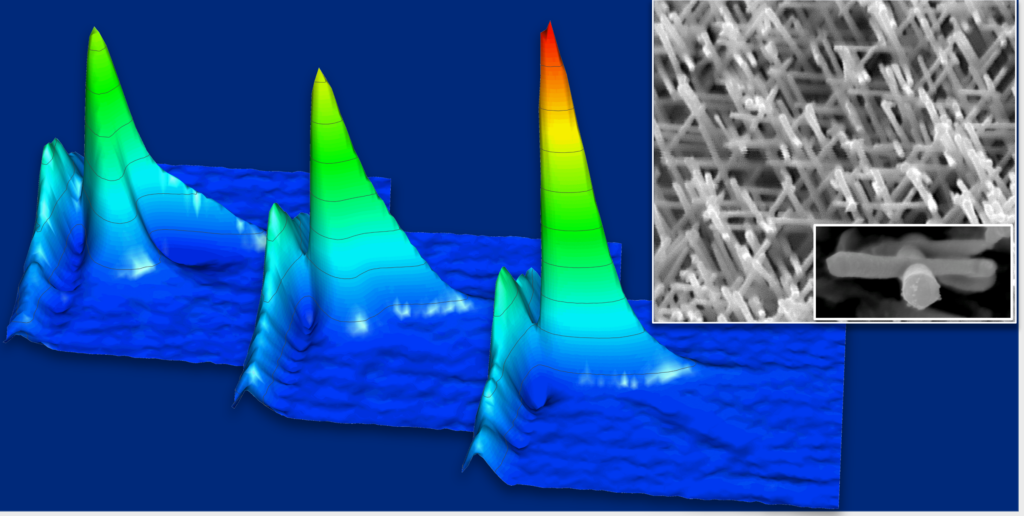
3D Nanowire Networks and Foams (Prof. Kai Liu) The Liu group focuses on synthesis and experimental investigation of nanostructured materials, particularly in nanomagnetism and spintronics, which have potentially important technological applications in magnetic recording, low dissipation information storage and nanoelectronics. Current research topics include: 1) Magneto-ionic materials, whose properties may be manipulated by the application of an electric field through controlled motion of ions. These materials are promising towards energy-efficient nanoelectronics and neuromorphics. 2). Nanoporous metallic foams that are extremely light-weight, with enormous surface areas while maintaining mechanical stability. Such foams are being studied for particulate filtration, catalysis and interactions with biological systems. Student(s) working on the project will be involved with all aspects of the research, including sample synthesis, characterization, data analysis, manuscript preparation and research presentation.
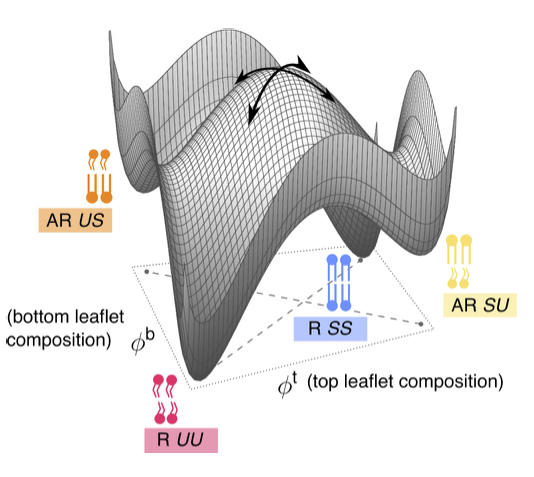
Theory and simulation of soft matter (Prof. Peter Olmsted) Professor Olmsted studies a wide range of systems, including liquid crystals, surfactant solutions, membranes, polymer gels and networks, polymer melts and blends. He has strong interest in biological problems and materials, including proteins, membranes, and cell biophysics (the figure shows a predicted free energy landscape for lipid bilayers). General themes are (1) the role of complex microstructure and fluctuations on equilibrium phase behavior and kinetics, and (2) strongly non-equilibrium effects, such as the effect of shear flow on the rich degrees of freedom in complex fluids. Theoretical tools for Professor Olmsted’s research include statistical mechanics, hydrodynamics, and computer modeling. Students with programming skills will be able to write programs to perform calculations of increasing complexity; alternatively, Mathematica or MatLab, or more sophisticated molecular dynamics packages may be used for some problems. Some projects will be appropriate for students with very strong mathematical skills in linear algebra, differential equations, and vector calculus/differential geometry. Project ideas this year include simulations and calculations of polymer glasses, the physics that underlies the process of protein production (“from the nucleus to the ribosome and back”), the non-Newtonian fluid mechanics of Additive Manufacturing (3D printing), and analysis of computer simulations of small molecules diffusing in the skin. It is likely that other projects will emerge between now and then!
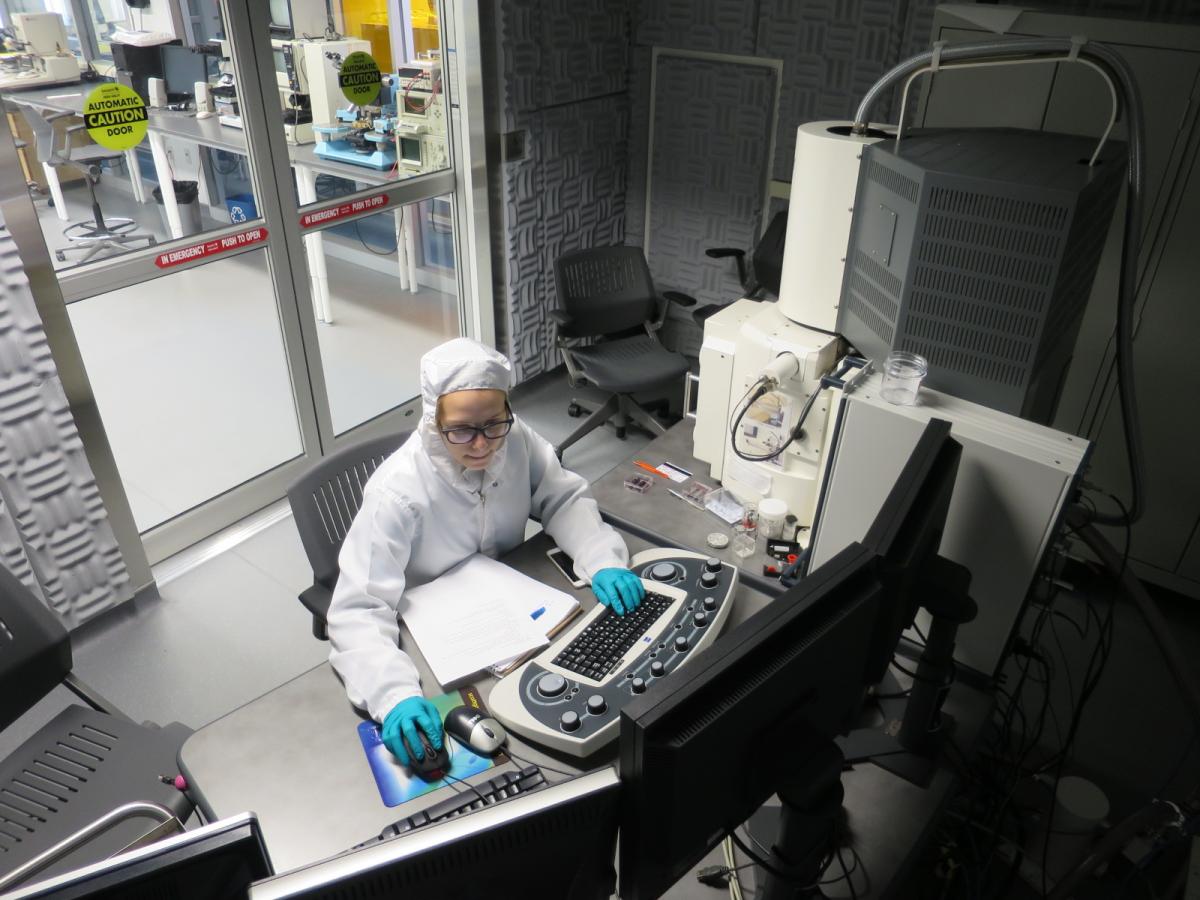
Nano and micro technology (Prof. Mak Paranjape) The Paranjape group works on the design, fabrication, and characterization of biochemical and biomedical sensors, microfluidic devices, and polymers for drug delivery and tissue scaffolding applications. Students are trained in general laboratory safety and cleanroom etiquette, followed by training on state-of-the-art processing equipment such as mask aligners for photolithography, reactive ion etcher for dry plasma surface treatments, magnetron sputterer, and electron beam evaporators for metal deposition, furnaces for carbon nanotube and oxide growth, and scanning electron microscopy for image capture and nanolithography direct-write applications. Examples of some of the past summer projects include: i) silk and polymer electrodeposited nanoparticles for drug delivery, ii) biodegradable polymer nanofibers for tissue scaffolding, iii) conducting sub-micron polymer nanofibers for mimicking nerve myelination, iv) a nanofiber piezoelectric energy harvesting device, v) nebulized polymer nanoparticles for drug delivery, and vi) investigating 2D materials (MoS2 and MoTe2) in FET transistor configurations for sensing applications.
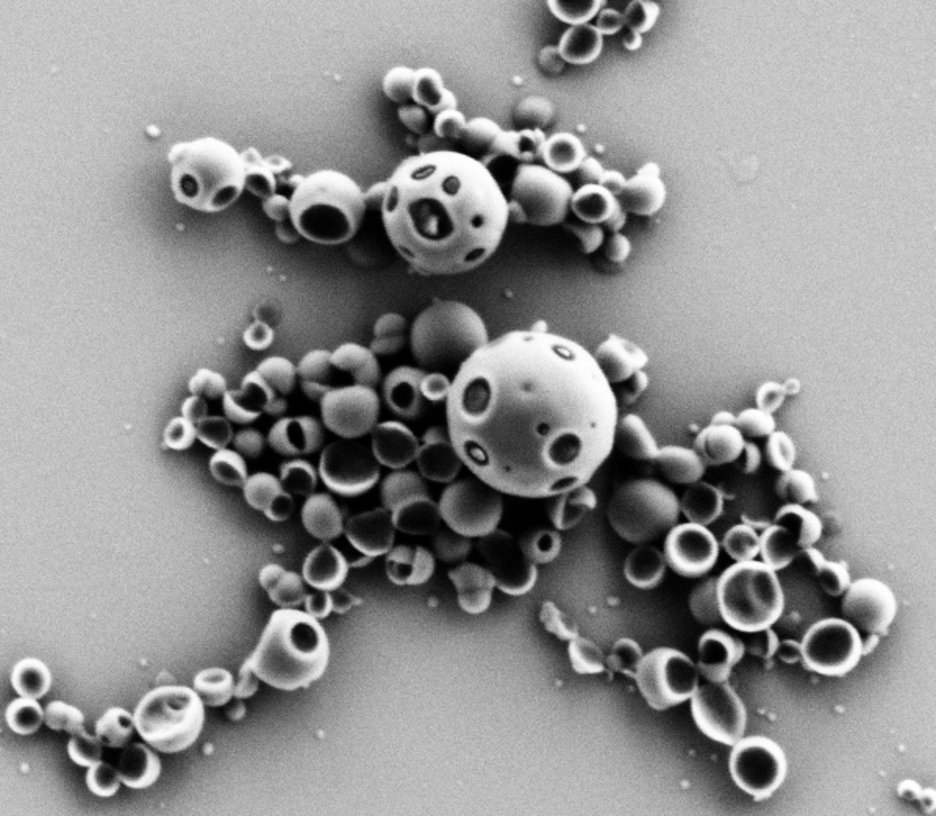
Synthesis and characterization of multicomponent nanoparticles (Prof. Ed Van Keuren) The main research in the Van Keuren group concerns the synthesis and application of nanoparticles. We use a variety of methods to characterize the nucleation and growth of the particles, including light scattering, various imaging techniques, and spectroscopy. Several current projects in the lab are: the study of small molecule encapsulation in polymer nanoparticles for application in drug development, nanoparticles contrast agents for MR and ultrasound imaging and the formation of nanoparticle cocrystals in solution. The project would be well suited to a student with an interest and background in optics and/or chemistry and does not require advanced coursework in physics.
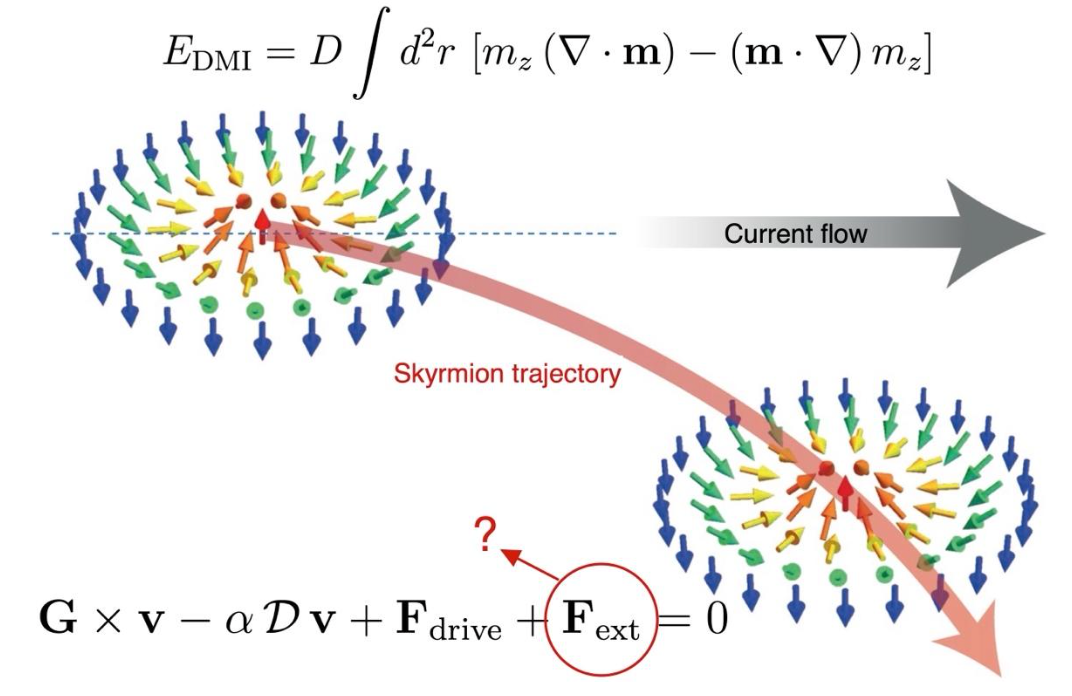
Engineering Skyrmion Trajectories for Magnetic Memory Technologies (Prof. Gen Yin). Skyrmions are promising information carriers for racetrack memory due to their nanoscale size, topological stability, and low energy cost for manipulation. However, their intrinsic transverse motion, known as the skyrmion Hall effect, causes skyrmions to drift sideways under applied currents, making precise control and reliable device operation challenging. This project investigates strategies to control skyrmion motion through the careful design of non-uniform magnetic properties, such as spatially varying magnetic anisotropy and Dzyaloshinskii–Moriya interaction (DMI). These engineered inhomogeneities generate additional forces acting on individual skyrmions, enabling controlled manipulation of their trajectories. We analyze skyrmion dynamics using a combination of theory and micromagnetic simulations, with the goal of proposing new skyrmion-based device architectures, advancing the development of next-generation information processing technologies. This project is suited for students who have completed coursework in vector calculus and linear algebra, and who have experience using Python.
